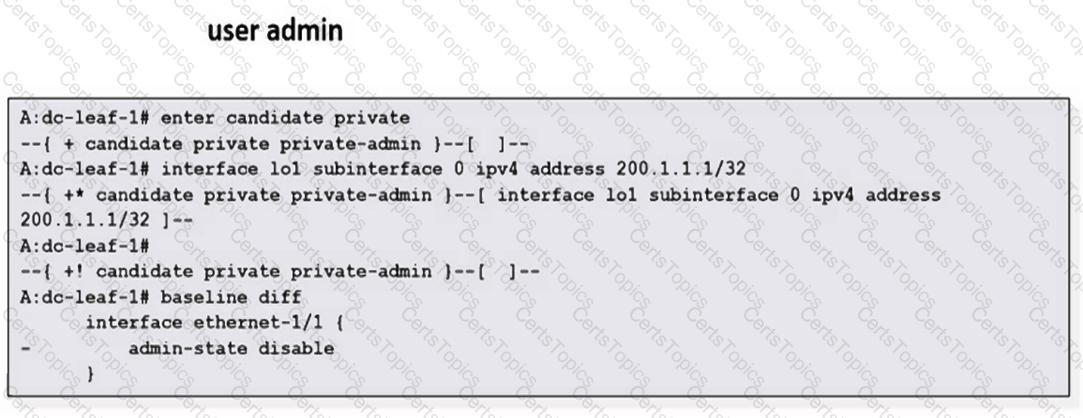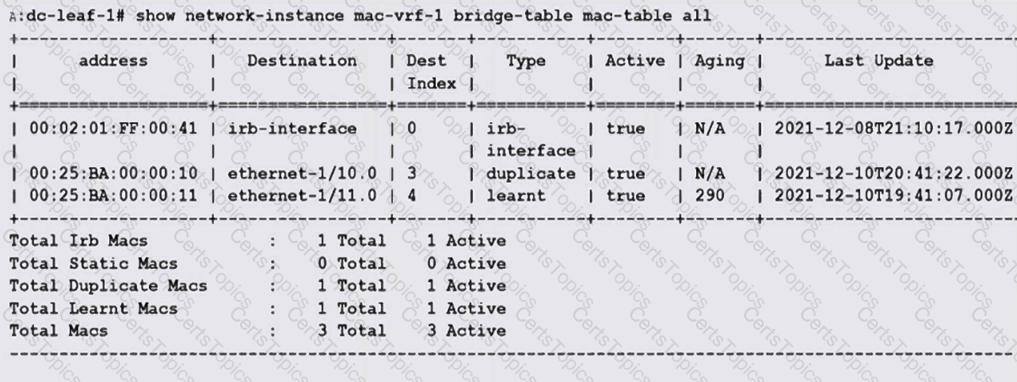Comprehensive and Detailed Explanation with Exact Extracts:
Option A & B are FALSE: While recursive lookups are required for both next-hops (10.1.1.0 and 10.2.1.0), there is no dependency between them. Each next-hop must be resolved independently via a separate recursive lookup in the routing table. Neither next-hop is resolved "using" the other.
"An indirect next-hop is not directly connected. The system must perform a recursive lookup in the routing table to find a route that matches the indirect next-hop IP address and resolve it to a directly attached next-hop and egress interface. Each indirect next-hop in a route is resolved independently."
"Routes with indirect next-hops require recursive route lookup. The router searches its routing table for a path to the indirect next-hop IP address itself. Multiple indirect next-hops in a single route entry are resolved in parallel, not sequentially."
Option C is TRUE: The exhibit shows a single static route (192.168.20.0/30) with two indirect next-hops (10.1.1.0 and 10.2.1.0). This configuration defines a next-hop group with two members for this route, enabling Equal-Cost Multi-Path (ECMP) load balancing or redundancy.
"Multiple next-hop addresses can be specified for a static route. This creates a next-hop group. Traffic matching the route prefix is load-balanced across all active next-hops in the group using ECMP."
"A static route entry listing multiple next-hops implies a next-hop group. The number of next-hops listed in the show route-table output for a single route ID directly indicates the number of next-hops configured in the group."
Option D is FALSE: The preference value (Pref) is configured per route, not per next-hop within the route. Both next-hops (10.1.1.0 and 10.2.1.0) share the same preference value (5), as they belong to the same route entry (ID 0). Next-hop selection within the group is based on the ECMP hashing algorithm, not preference. Preference is used to choose between different routes (from different protocols) to the same prefix.
"The preference value is a property of the static route itself, not individual next-hops within it. All next-hops in a static route's next-hop group inherit the same preference value."
"When multiple next-hops exist for a route (ECMP), the active next-hop for a specific flow is determined by a hash of packet header fields (e.g., 5-tuple). Preference values are only compared when selecting between different routes (e.g., static vs. BGP) to the same prefix."
[References:, Nokia SR Linux Configuration Guide: Sections "Static Routes", "Route Resolution"., Nokia SR Linux Fundamentals Guide: Sections "Static Routing", "Route Selection", "Route Resolution"., ]


